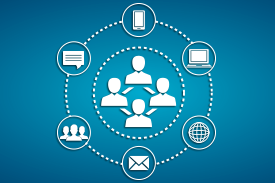Disaster does not have to come to an enterprise or contact center in the form of a major natural disaster worthy of news coverage. Disaster in the workplace can come in the form of heavy rains, a power outage, loss of potable water or a backhoe digging up telecom fiber across the street. Anything that renders employees incapable of working is a disaster and responsible organizations should plan for such an event.
This article has been put together by the research team at ZRG International. Find out more about ZRG towards the end.
An enterprise or contact center that spends the time and energy to create a disaster recovery (DR) or business continuity (BC) plan is very wise to do so and should plan for different contingencies that could happen, rate their impact and then rate their likelihood and build a plan around those elements that are both highly impacting to an organization and also fairly likely.
Whatever the expected incident, an organization should understand what to do if employees cannot access their office workstations or if the contact center loses electricity.
It would be best to develop a very functional plan that is more step by step – regardless of the disaster, what is to happen first, second, third after the disaster is over. Things like checking on employees, checking for fire or other situations that would cause an evacuation. If the building is safe to occupy and employees are safe and well, then a quick triage of production systems may be next: phone systems, call routing applications, CRM systems and so on. A validation that dial tone exists, electricity is on or else UPS systems or backup generators are engaged would be next and so on.
A few things to consider as you approach your plan:
If production systems need to be repaired or replaced, is there a protocol during a disaster to purchase them? Equipment and application vendors should be documented so they can easily be contacted and appropriate service levels should exist to get new equipment dispatched to get systems back online.
Approval processes for purchasing equipment should be in place when normal processes cannot be engaged. It should be known who in the organization can purchase what dollar amounts without approval if the CFO cannot be reached and purchase orders cannot be signed etc.
Getting computer systems and telephones back online quickly is critical to the organization’s continuity as they are typically the life blood of the organization’s revenue stream in taking sales orders, servicing customers and retaining customer loyalty etc. and should be prioritized over back-office systems such as billing systems, accounting systems, HR systems and so on, but those back-office systems should also be documented in the plan, just at a lower priority.
Volumes have been written on disaster recovery/business continuity, templates exist for purchase to create such plans and experts on the topic will provide much more value than the simple ideas you’ll see here, but the point is to assign an owner to create the plan, gather the information and publish something, even if it’s not perfect in its initial draft – it is certainly better than having nothing in place.
Without an owner, it will never get written. Remember when everyone owns it, no one owns it and it simply will not get done. This may be an opportunity to hire an outside consulting firm that specialize in this. Even though the price tag may look high at first, think of the cost of not having a plan or the salary dollars associated with many employees in the organization taking a stab at it over months and months.
Now we will focus in on a few best practices to ensure continuity in the event of a disaster, big or small.
First let’s start with the telecommunications component. Many organizations have voice T-1s or multiple T-1s running into their contact center or office environment. One thing your telecom provider can help you investigate is whether the building you inhabit has multiple fiber entrance points into the building. While certainly less common, it is fortunate when two local access providers (usually the incumbent telco or local exchange carrier (LEC) and a newer entrant into the dial tone market, the competitive local exchange carrier (CLEC) ) both run feeds into the same building at differing points.
This stroke of luck allows an organization to use both local providers for the last mile on their T-1 circuits ideally running back to two unique long distance carriers in two different markets where their equipment resides. This dual redundancy allows for one local access provider and even one long distance provider, to completely lose service without severely impacting your organization. Any contact center would prefer to be down to half capacity rather than being 100% out of commission. This redundancy happens at the telecommunications infrastructure layer, but there are others to think about as well.
If your organization does not use voice T-1s but instead is using Voice over IP (VoIP), an organization can similarly protect against a single point of failure at the network level by securing two internet connections or access points into multiple managed service providers handing their IP telephony needs.
Using different protocols can be a great point of disaster recovery. An organization could have voice T-1s and TDM signaled phones behind a legacy PBX as their primary mode of communications to the world and as a backup have VoIP hard phones or software based phones activated with current credentials that could be deployed should they lose their voice T-1s or even lose their PBX system due to card failure, power supply failure and so on.
Implementing the VoIP solution by having employees log into their softphone or plugging their VoIP hard phone into a data wall jack, they can begin taking calls as if nothing ever happened. Of course this assumes the contact center solution is still online at the premise, or better yet is a fully managed, multi-tenant SaaS solution. Then you are sure to be able to use this method of back up since all of the auto attendant, call routing, screen pops etc. are handled in the cloud and not on premise.
Another form of redundancy is sending agents home to begin taking or making calls. Ideally the organizations has already identified which employees have a robust home PC and high speed internet connection with appropriate VPN access to the network, or have roving lap top computers ready to dispatch to employees who can work from home, should facilities become unavailable in the traditional contact center.
Home agents have the ability to leave the impacted building or area of disaster and go to higher ground, or areas not impacted by the power outage etc. With the proper contact center solution that is easily ready to facilitate home agents, the organization can be back up and running in a very short time, with very little additional money spent.
Some or all of these methods can be deployed to ensure a better ability to keep agents on the phone in order to take orders or service customers.
Each organization should evaluate their unique situation to decide which business continuity plans are most appropriate for the kind of business being conducted. Our advice is to make a plan and spend the money now, before a disaster situation occurs and it’s too late.








